Have you ever felt like your daily routine has lost its spark? You may have been considering a career change and stumbled upon UX design, a rapidly growing field that catches your attention.
However, as you ponder this exciting new possibility, various apprehensions and fears may arise, making you question if it's truly worth pursuing.
This is a common scenario for many individuals considering the switch to UX design. While uncertainties are typical in any change, addressing them and gaining clarity is essential.
To help ease your concerns, we've compiled a list of common fears people have when considering UX design and demystifying them.
By the end of the article, you'll see that some of these fears are more easily overcome than you might think. Keep reading to learn more!
1) I won't have time to dedicate to UX Design
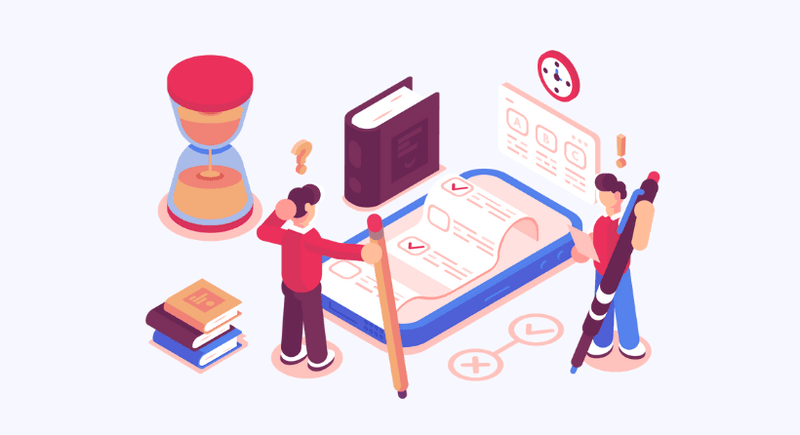
Time is certainly one of the most valuable assets we have in our lives. Therefore, it is totally understandable to be afraid of losing time or not having time to dedicate to changing careers.
But we have to remember that our life is built on priorities. And these priorities are changeable over time. What you thought was important years ago may not have the same weight today.
So the main question is: is switching careers and becoming a UX Designer really your priority? Is it what you really want for your life?
If the answer is positive, then time is not a problem or an obstacle. Because we always find time to fulfill our priorities.
Several of our students have switched to UX Design, even with their hectic work and study routines. They managed to organize their schedules and study with consistency and commitment.
Check out the career path of Vanessa Sousa and other MID students to get inspired.
Diving headfirst into something you want is not a waste of time but an investment.
2) I won't have opportunities in UX Design where I live
Worrying about work opportunities is natural, especially given the pervasive fear of unemployment.
However, it's important to note that the field of UX Design is experiencing rapid growth, offering promising career prospects.
In fact, a study by NN/g highlights the increasing demand for UX professionals.

This information is reassuring and suggests that the prospects for opportunities in UX Design are strong globally.
Companies are recognizing the impact of UX Design on business, seeing it as a key component of their business strategies, resulting in increased demand for skilled professionals in the field.

In other words, the UX market has a growing number of opportunities.
Furthermore, if you feel that your city has few opportunities, there is always the possibility of moving to warmer regions, work-wise. That is if you feel that this move makes sense and that the benefits outweigh the difficulties.
Another possibility is to apply for remote jobs. This modality is becoming increasingly common, whether for domestic or international companies.
As an example, we can mention several students who started their careers in UX working remotely for companies inside and outside Brazil:
The Pandemic and the new perspectives of Work in UX Design
2020 will undoubtedly be a year to remember due to the Covid-19 pandemic, which has dramatically altered our social interactions, routines, and work arrangements.
As social distancing became crucial, many companies had to rethink their approaches to work, leading to a surge in remote work adoption.
According to LinkedIn executive Karin Kimbrough, there has been a significant increase in both demand and supply for remote jobs on the platform.
In fact, a quick search reveals a multitude of remote work opportunities available.
Despite the challenges this pandemic has brought, it has also accelerated the shift towards more flexible and remote work arrangements, opening up new possibilities for workers everywhere.

In this sense, looking on the bright side, companies are understanding and adapting to the reality of remote work. And this also impacts the UX Design market.
Thanks to the availability of remote work tools like Zoom, Teams, Slack, Notion, and others, the demand for UX designers continues to grow even in the midst of the pandemic.
This means you can still find opportunities to work in UX design without leaving your city or country.
Of course, remote work is just one aspect of the changing work landscape. Some companies are also creating physically-distanced offices with reminders and signage between desks.
However, the important thing to note is that the job market is adapting, and there are still plenty of opportunities available for those interested in switching to UX design.
Don't give up on your dream – keep searching and applying for positions that interest you.
3) I have no background in design or UX
One of the most common fears haunting people who want to switch to UX Design is their background.
This subject is so recurrent that we even wrote an entirely dedicated article to it: Do I Need a Design Background to Switch to UX?
The short and direct answer to this question is: no, you do not need a background in Design to switch to UX.
In fact, InVision's 2019 Product Design Hiring Report states that companies value UX Designers with different backgrounds.

Different backgrounds bring diverse skills and perspectives, and given that UX Design is a multidisciplinary field, this is highly appreciated.
Our MID program students are great examples that you don't need a specific background to transition to UX Design:
- Barbara Bottaccio majored in Social Sciences;
- André Borges was a Marketing analyst;
- Inis Leahy majored in Psychology;
- Lívia Assunção has a background in Biology.
- Leonardo Andrade has a degree in Civil Engineering.
These examples demonstrate that a background in a different field does not necessarily prevent you from transitioning to UX design. With the right mindset, skills, and resources, anyone can make the switch to a fulfilling career in UX design.
Are you unsure if it is really time to change? Check out the main signs!
4) I feel old to change careers
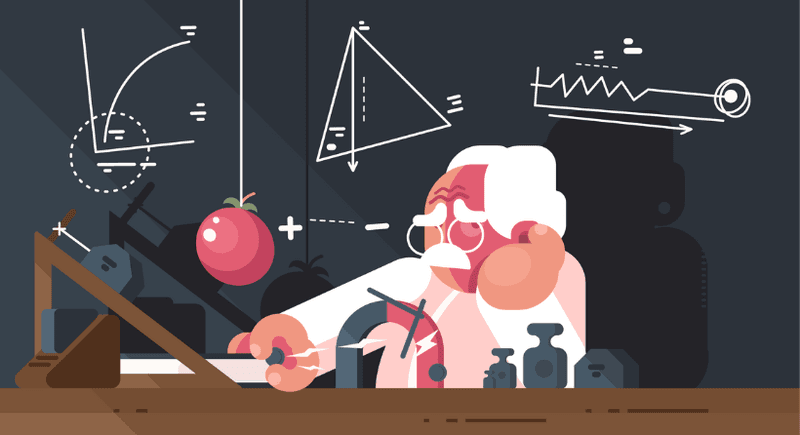
The age issue is a common concern for most people, especially regarding careers. But this should be analyzed with caution.
There is no right age to change careers, much less to switch to UX Design.
The big question is how you plan this move. Because the tendency is, the older we get, the more responsibilities we have – family, children, and more and more bills.
So planning is essential for you to transition to UX Design.
Don't be afraid to make changes that will make you happier and more satisfied, regardless of age. Plan this move carefully but don't quit.
Here are two examples to inspire you: Jey Castro and Rodrigo Guilherme. Both MID students made a career change at 40 and couldn't be happier with their decision.
5) Learning UX Design is too hard
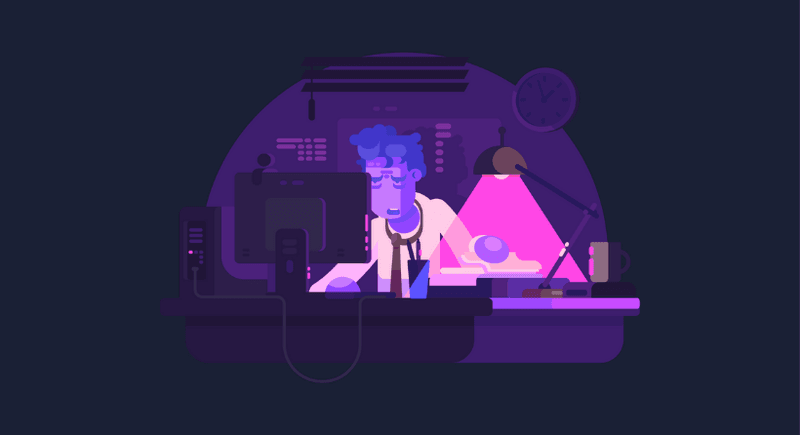
Although UX Design may seem daunting at first, it's important to know that it's not an impossible subject to learn. Contrary to what some may believe, UX Design is not an obscure or otherworldly concept. It's simply a discipline that focuses on creating meaningful experiences for users.
However, like any area of expertise, if you want to master UX Design, it requires a significant amount of study and dedication. You'll need to invest time in learning the principles, techniques, and tools used in UX Design.
Additionally, gaining hands-on experience and putting your knowledge into practice will be essential in transitioning to a career in UX Design.
In summary, while UX Design may seem challenging at first, with a willingness to learn and dedication, anyone can become proficient in the field.
"After a short time, I knew I wanted to go into UX/UI and started looking for ways to specialize. I picked up several materials to study, attended more workshops, created a circle of contacts in this area, and got into graduate school. From the moment I decided I wanted to change, I went after making it happen. It is hard work to change careers, you have to jump in, study hard, and have lots of motivation. But go without fear, because it will work out! Juliana Nieri
You can study UX Design in two ways: on your own or with the help of a course. It all depends on the way you study and your learning capacity.
Don't be intimidated because you think UX Design is a complex subject, your dedication will make you realize that it's not as hard as it seems.
6) I don't want to go to college (again)
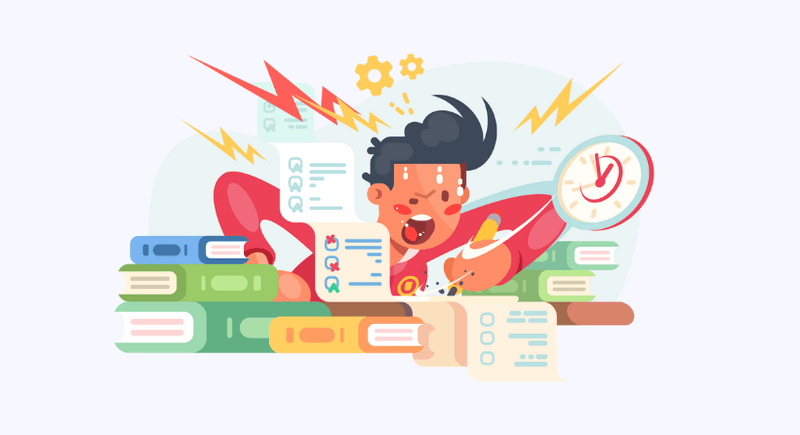
Those who think that to transition to UX Design, it is necessary to go to college to learn UX is dead wrong.
Well, actually, this subject is quite controversial.
But, as we have seen, you don't need a specific background to be able to switch to UX Design, and neither do companies care about this topic.
The truth is that UX Design is a profession where experience is highly valued. Therefore, an important document to have on hand is your portfolio.
Through it, companies will be able to evaluate your experience, technical skills, reasoning, and professional knowledge.
Therefore, more important than a degree are the projects you have participated in and the experience you have gained from them. For sure, this is what will make the difference when it comes to hiring you.
However, although a degree in UX is not an essential item on your resume, it is always important to try to specialize and acquire more knowledge in the field.
Because of this, there are several courses in UX Design that can help you improve.
Aela, for example, has the Mastering Interface Design program, which is a complete course to learn Product Design (UX/UI) from scratch!
7) I have no portfolio in UX Design
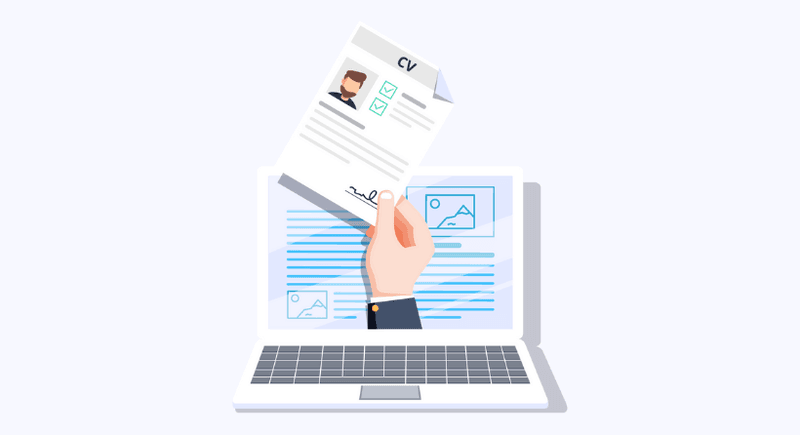
The lack of a portfolio is a common concern for those transitioning to UX Design. However, it's important to remember that starting a new career means starting from scratch, and not having a portfolio at the beginning is normal.
What's important is to show your problem-solving skills and thought process. When it comes to creating a portfolio, it's not necessary to have actual work experience to showcase.
You can use academic projects or personal projects to demonstrate your skills and potential. What matters most is your ability to communicate your ideas clearly and show your understanding of user experience principles.
So, don't let the lack of a portfolio hold you back. Focus on building a strong foundation by demonstrating your knowledge and skills through personal projects, case studies, and academic work.
With time and patience, you'll be able to add more impressive projects to your portfolio.
MID students' examples:
Many of our MID students have used the program exercises in their portfolios and obtained great results. By completing course exercises that demonstrate their abilities, these students have been able to build their portfolios and receive highly positive feedback from potential employers.
These outcomes reflect the efficacy of our program's practical, hands-on curriculum. If you enroll in the MID program, you too can acquire the skills and expertise needed to create top-notch projects that can set you apart in a competitive job market.
I was in São Paulo when I got a call from a person telling me that they liked my LinkedIn and my portfolio. In fact, my portfolio only had two UX projects at the time, which were developed during the first 2 levels of the MID program – Rodrigo Guilherme
I did an interview and was able to put together a portfolio overnight. I put together 3 pieces plus a complete case, using the MID program exercises. I presented the portfolio and passed the process. – Joyce Almazan
During the program, I was building my portfolio through the UX and redesign projects proposed by Aela's mentors. So, whatever I was doing, I used it as a resource to compose my portfolio and present it in the interviews. – Fabia Coelho
We understand that the lack of a portfolio brings some insecurity for those who are starting out, but, as we have seen, it is perfectly possible to compose a portfolio just with exercises. So, don't let this fear dominate your will to switch to UX Design.
And just one important point: if you have a portfolio as a Graphic Designer, don't present it as a UX/UI Design portfolio. These are two very different things!
Reading tip: How to Pivot to UX Design Without the Perfect Portfolio
8) I don't speak English
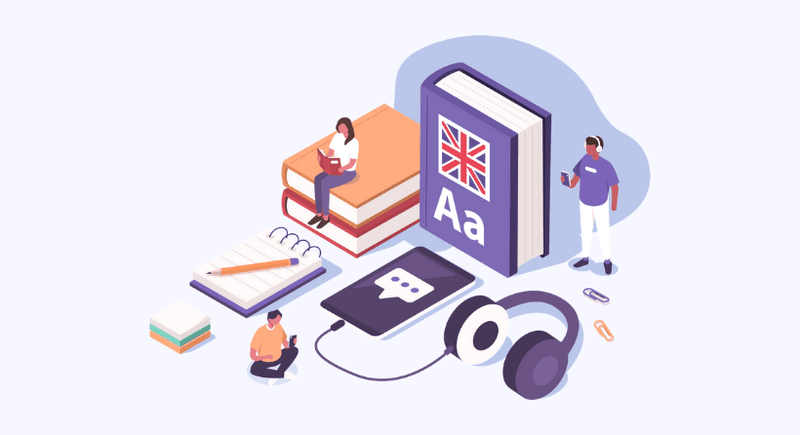
While it's true that many job opportunities in UX Design are with international companies or in foreign countries, not all positions require fluency in English.
However, not being proficient in English can limit your options and become a drawback in some cases.
That being said, we highly recommend pursuing an English course to increase your chances of success.
Many multinational companies require English as a must-have skill, but there are plenty of alternative methods to learn, such as online courses and apps that can teach you in a different way and even faster than traditional courses.
Ultimately, your success depends on your planning and dedication to learning.
9) It will take a long time to land a job in UX Design

It's important to note that the UX Design market is currently thriving, even during the pandemic, and companies are actively seeking UX professionals to join their teams.
With this in mind, your chances of landing a job within a year are quite high. However, it's also important to recognize that transitioning into UX requires dedication to learning and hard work.
While it may not be easy, it is achievable. To increase your chances of success, it's crucial to stay focused and create a clear plan with specific objectives.
We are proud to showcase some of our students who have successfully kickstarted their careers in UX Design in less than a year. Take inspiration from their achievements and trust that with dedication and effort, you too can reach your goals:
Daiane Thomé
"I had a six-month plan to transition to a completely different career. My focus was primarily on the MID program, dedicating myself to daily study and preparing to seek job opportunities in the field. My original aim was to secure a position by March of this year, but unforeseen circumstances arose in February, causing a delay. However, with persistence and hard work, I was able to secure my first opportunity in UX Design in approximately nine months."
Thiago Alves
"I saw the announcement for the Mastering Interface Design (MID) program in August 2018 and started the course in the same period, probably at the end of the month. I got my current job as a UX Designer at Indra after seven months into the course!"
Diogo Alvarez
“In March, I left Netshoes and in April I started working at this new job. It ended up being quick, in less than 6 months I was able to switch to UX.“
Joyce Almazan
She managed to switch to UX in 7 months and work as a Product Designer at Wunderman:
"I did an interview and was able to put together a portfolio overnight. I put together 3 pieces plus a complete case, using the exercises from the MID program. I presented the portfolio and passed the process."
The UX Design is in high demand. Check out this article to understand the reasons for this growth and the opportunities that are available in this market: UX Design In High Demand
10) "I don't have any knowledge in UX to make the transition."

A lack of UX design knowledge may be a concern when deciding to transition. However, while it may be everyone's fear, it is also the “easiest” to resolve.
If we lack knowledge, we must pursue that, right?
There are several courses on UX Design online, and we, in fact, have an exclusive one focused on UX and Product Design, combining UX, UI, and Digital Products: the Mastering Interface Design (MID) program.
The MID is a UX and Product Design Certification Program that will teach you everything you need to know to become a talented UX/UI Designer.
Moreover, at each level of the course, you will have the opportunity to dive deep and hone your skills by working on hands-on projects. With the expert guidance of mentors, you will be able to create top-notch projects that will form a valuable part of your portfolio.
The step-by-step guidance from the mentors ensures that you get the support you need to succeed in the program.
You will present these projects during live classes and receive feedback from mentors and other MID students. All of this will prepare you for future job interviews!
Our course has several advantages:
- Teachers and mentors with international careers and certifications;
- Practical focus, with exercises that can compose your portfolio;
- Focus on the international market;
- Networking opportunities through the community of students;
- Quick results;
- Schedule flexibility;
- Updates with market trends;
- Individual mentoring on projects;
- Mentoring on live online classes;
- Guarantees in case you are not satisfied with the course.
11) "I don't have the money to pay for a UX Design course."

Certainly, financial issues are one of the biggest concerns when we think about making changes in our lives.
However, expenses with your studies in UX Design can be seen as an investment. With the UX Design market heating up, salaries are still quite aggressive.
The time to make the switch is now because as the number of UX Designers increases, the market will stabilize salaries, and competitiveness will increase.

We are confident that your investment in a program like the MID will yield returns much sooner than expected. With the practical skills and knowledge you will acquire, you will be well-prepared to pursue opportunities in UX and start building a rewarding career.
Furthermore, we offer a satisfaction guarantee, so if for any reason you're not satisfied with the course, you can request a refund. We believe in the quality and effectiveness of our program, so the risk is entirely on us.
But if you're still hesitant about making this investment, start by exploring our free content, including a wealth of informative and educational resources on our website.
Ultimately, don't stop learning and pursue your passion for UX Design!








